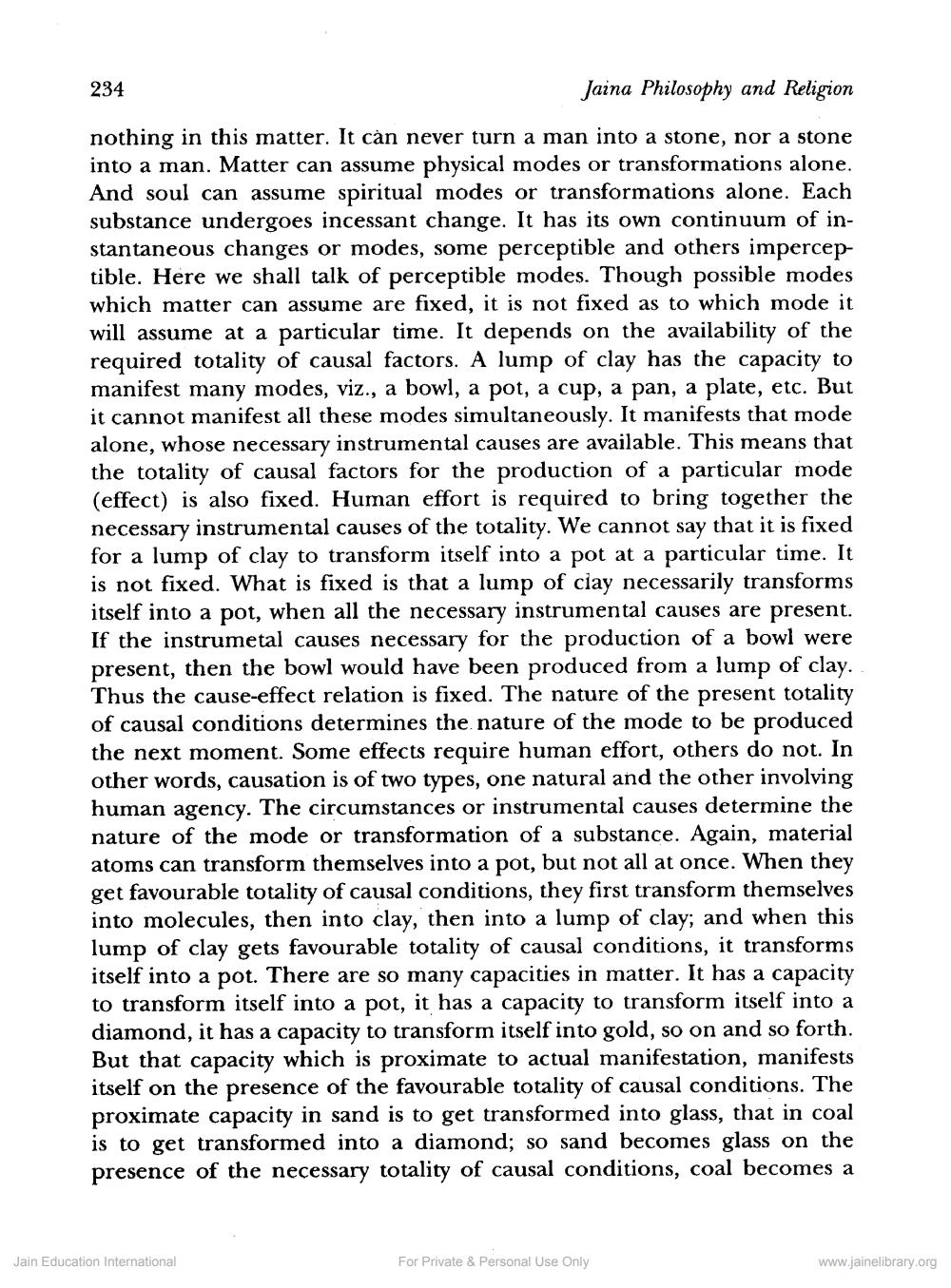________________
234
Jaina Philosophy and Religion
nothing in this matter. It can never turn a man into a stone, nor a stone into a man. Matter can assume physical modes or transformations alone. And soul can assume spiritual modes or transformations alone. Each substance undergoes incessant change. It has its own continuum of instantaneous changes or modes, some perceptible and others imperceptible. Here we shall talk of perceptible modes. Though possible modes which matter can assume are fixed, it is not fixed as to which mode it will assume at a particular time. It depends on the availability of the required totality of causal factors. A lump of clay has the capacity to manifest many modes, viz., a bowl, a pot, a cup, a pan, a plate, etc. But it cannot manifest all these modes simultaneously. It manifests that mode alone, whose necessary instrumental causes are available. This means that the totality of causal factors for the production of a particular mode (effect) is also fixed. Human effort is required to bring together the necessary instrumental causes of the totality. We cannot say that it is fixed for a lump of clay to transform itself into a pot at a particular time. It is not fixed. What is fixed is that a lump of ciay necessarily transforms itself into a pot, when all the necessary instrumental causes are present. If the instrumetal causes necessary for the production of a bowl were present, then the bowl would have been produced from a lump of clay. Thus the cause-effect relation is fixed. The nature of the present totality of causal conditions determines the nature of the mode to be produced the next moment. Some effects require human effort, others do not. In other words, causation is of two types, one natural and the other involving human agency. The circumstances or instrumental causes determine the nature of the mode or transformation of a substance. Again, material atoms can transform themselves into a pot, but not all at once. When they get favourable totality of causal conditions, they first transform themselves into molecules, then into clay, then into a lump of clay; and when this lump of clay gets favourable totality of causal conditions, it transforms itself into a pot. There are so many capacities in matter. It has a capacity to transform itself into a pot, it has a capacity to transform itself into a diamond, it has a capacity to transform itself into gold, so on and so forth. But that capacity which is proximate to actual manifestation, manifests itself on the presence of the favourable totality of causal conditions. The proximate capacity in sand is to get transformed into glass, that in coal is to get transformed into a diamond; so sand becomes glass on the presence of the necessary totality of causal conditions, coal becomes a
Jain Education International
For Private & Personal Use Only
www.jainelibrary.org




